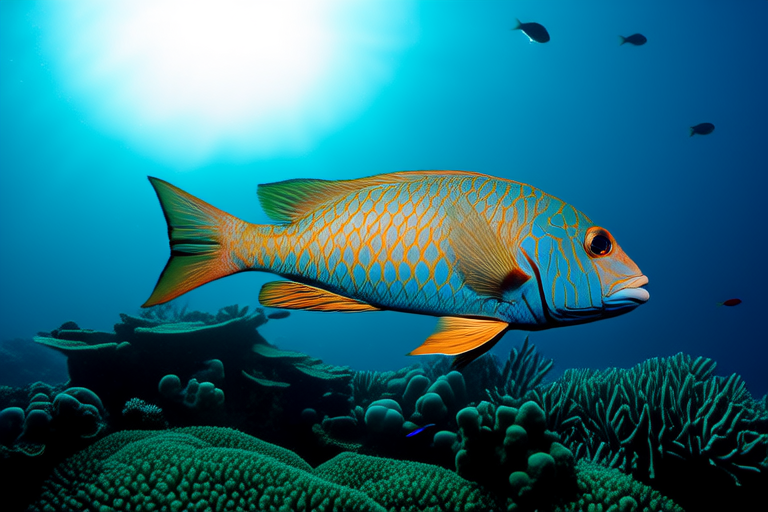Unraveling the Mysteries Behind Parrot Fish’s Vibrant Colors and Behavior
The ocean is home to a vast array of colorful and fascinating creatures, each contributing uniquely to its ecosystem. Among them, parrot fish stand out due to their vibrant colors and intriguing behaviors. These fish, found primarily in tropical and subtropical waters, have long captivated divers and marine biologists alike. This article delves into the unique appearance of parrot fish, the science behind their striking colors, their behaviors, and the critical role they play in marine ecosystems.
The Unique Appearance of Parrot Fish
Parrot fish are known for their vivid hues and intricate patterns that range from soft pastel shades to bold, electric colors. Their bodies are often adorned with stripes, spots, and patches of blue, green, yellow, and red. The variety in their coloration can be attributed to their diverse species, with over 90 different types of parrot fish found across the world’s oceans. These colors serve multiple purposes, from camouflage to mating displays and species recognition.
Scientific Explanations Behind the Colors
The vibrant colors of parrot fish are not just for show; they play crucial roles in their survival and reproduction. One primary function of these colors is camouflage, which helps them blend into their surroundings and avoid predators. For instance, juvenile parrot fish often display more subdued colors compared to adults, allowing them to remain inconspicuous until they reach maturity. As they grow, their colors become brighter and more distinct, signaling their readiness to reproduce.
Mating displays are another significant aspect of parrot fish coloration. During breeding season, males often exhibit more intense and varied colors to attract females. These displays can involve changing hues rapidly or displaying specific patterns that signal fitness and genetic health. Species recognition is also facilitated by these colors, ensuring that individuals of the same species can identify one another for mating and social interactions.
Behaviors of Parrot Fish
Parrot fish exhibit a range of fascinating behaviors that contribute to their ecological significance. One of the most intriguing aspects of their behavior is their sleeping habit of creating mucus bubbles. At night, parrot fish secrete a protective mucus cocoon around themselves, believed to mask their scent from predators and provide some protection against parasites. This nightly ritual is a testament to the fish’s adaptability and resourcefulness.
In addition to their unique sleeping habits, parrot fish play a vital role in maintaining coral reef ecosystems. They are herbivorous, feeding primarily on algae that grow on coral reefs. By grazing on these algae, parrot fish prevent overgrowth, which could otherwise smother corals and disrupt the delicate balance of the reef ecosystem. Their feeding activities also help in the distribution of coral larvae, further promoting the growth and resilience of coral reefs.
Diet and Social Interactions
The diet of parrot fish consists mainly of algae, which they consume using their strong beaks. These beaks are specially adapted for scraping algae off rocks and coral. In addition to algae, some species may also feed on small invertebrates and detritus. Parrot fish are generally solitary but can form large schools during feeding times, especially when food sources are abundant. These schools can consist of hundreds of fish, creating a mesmerizing spectacle for underwater observers.
Social interactions among parrot fish are complex and varied. Males often establish territories and engage in aggressive displays to defend their space from intruders. Females, on the other hand, tend to be more passive, choosing mates based on the quality of the territory rather than physical aggression. This dynamic relationship ensures that only the fittest males get to pass on their genes, contributing to the overall health and diversity of the species.
Contribution to Marine Biodiversity
Parrot fish are essential contributors to the biodiversity of marine environments. Their grazing activities not only maintain the health of coral reefs but also promote the growth of new corals. By preventing algal overgrowth, parrot fish allow light to penetrate deeper into the water, enabling photosynthesis and supporting a wider range of marine life. Additionally, their excrement contains nutrients that enrich the surrounding waters, further enhancing the productivity of the ecosystem.
The presence of parrot fish also influences the behavior of other marine organisms. For example, their feeding habits can alter the composition of algae communities, indirectly affecting the species that rely on these algae for food. This ripple effect extends throughout the entire food web, highlighting the interconnectedness of marine ecosystems and the importance of preserving parrot fish populations.
The Importance of Conservation Efforts
Despite their ecological significance, parrot fish face numerous threats that jeopardize their survival. Overfishing, habitat destruction, and climate change are among the primary challenges they encounter. Many species of parrot fish are considered vulnerable or endangered, with some populations declining at alarming rates. To address these issues, conservation efforts are crucial.
Efforts to protect parrot fish include establishing marine protected areas, enforcing fishing regulations, and raising awareness about the importance of these fish in marine ecosystems. Additionally, reducing carbon emissions and addressing the root causes of climate change are essential steps toward preserving the habitats where parrot fish thrive. By supporting conservation initiatives and advocating for sustainable practices, we can ensure the continued existence of these vibrant and vital creatures.
In conclusion, parrot fish are not only visually stunning but also play a pivotal role in maintaining the health and biodiversity of coral reef ecosystems. Their vibrant colors and intriguing behaviors offer valuable insights into the complexity of marine life. Understanding and protecting these remarkable fish is essential for the preservation of our oceans and the countless species that call them home. Let us continue to explore and appreciate the mysteries of parrot fish, ensuring their place in the rich tapestry of marine biodiversity.
